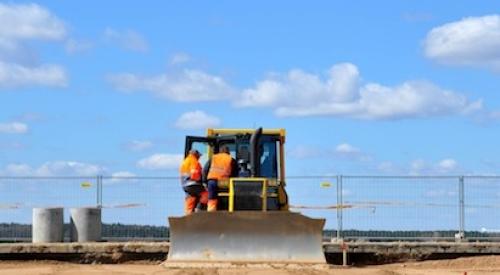Last September, I attended Professional Builder's annual Benchmark Conference in New Orleans while Hurricane Ivan bore down upon the city. The newspapers predicted that a direct hit would put the city under as much as 20 feet of water. Hundreds would die from the winds, the storm surge and the devastating longer-term impact of trillions of gallons of raw sewage and industrial waste. Thousands would be trapped on the upper floors of hotels and in the Superdome while half a million refugees spread into the countryside. There would be plagues of malaria, typhoid and E.coli. New Orleans would be rendered uninhabitable.
Reading these reports, the notion that a major metropolis could grow undeterred, largely below sea-level and in a primary hurricane zone with only marginal protection, seemed unthinkable. But knowing what we now know, leaving it unprotected seemed unconscionable.
I, along with the other 250 or so Benchmark attendees and the entire city of New Orleans, escaped Ivan the Terrible. The storm veered eastward and slammed into the already beleaguered Florida panhandle. The considerable death and destruction was minor, they said, compared to what a New Orleans landfall would have wrought.
Last fall I pondered what I read about New Orleans and what could have happened. It was hard to believe that the combination of Federal, state and local governments along with presumably astute business people could allow a million and a half citizens to live in such danger. Back in the 70's, the Army Corps of Engineers stated flatly that the dikes and levees could not withstand more than a Category 3 assault. Reports detailed how hundreds of millions in funds designated to bring the levees up to Category 4 & 5 strength and protect other coastal areas had been diverted toward "other priorities."
The price tag for disaster prevention in New Orleans appeared to be perhaps a half a billion dollars. It would take similar amounts to protect the delta along with Biloxi, Gulfport and Mobile. A reasonable projection was $2 billion to prevent the catastrophe. Could we afford it? The estimates last year of the cost of a direct hit on New Orleans by a Category 4 or Category 5 hurricane, were $20-, $30-, even $50-billion dollars. We know today, as I write this column just one week after Katrina came ashore, that those estimates were low. Way low.
One year later, the lowest figures we hear for the cost of cleaning up, rebuilding and protecting New Orleans are around $100 billion. In addition, economists are predicting a 1 percent drop in national gross domestic product. That amounts to another $125 billion. Then there is the run-up in fuel prices. The Department of Energy Website says we will burn around 140 billion gallons of gas in this country in 2005. Gasoline was already going up, but we, post-Katrina, are averaging well over $1 a gallon more than we paid last year.
Start with $140 billion, then add the increases in diesel, jet fuel, home heating oil and natural gas. Let's make an educated guess of about $200 billion and remember that unlike the money spent on disaster aid and recovery, 80 percent of the fuel dollars will be going outside the United States. What percent of that $200 billion increase in fuel cost is attributable to Katrina?
It's all speculation, but to say the costs are astronomical is an understatement. If you add up the recovery costs, the hit to GDP and perhaps half of the excess fuel costs, then factor it down a bit for redundancies, we are looking at a minimum of $250 billion. Granted, some of the damage could never have been avoided, but it looks like a couple of billion would have prevented 80 percent of it. That's an investment of $2 billion to prevent $200 billion worth of damage!
If you recognize the ratio those numbers represent, go to the head of the class. For years, my associates and I have taught the old quality maxim known as the "Rule of 1-10-100," often called "The Good, The Bad & The Ugly." Some AT&T engineers established the principal back in the 1950s.
Simply put, the rule of 1-10-100 says, as a rule of thumb, that for every $1 you don't spend on prevention, you will spend $10 on inspection or $100 on field failure. Katrina has confirmed this lesson in a most painful way. We lacked the foresight, leadership and commitment to spend the $2 billion on prevention. So now we will spend at least $200 billion dealing with the consequences.
Why is it so hard for us to "do prevention?" Is it simply human nature to be habitual procrastinators, stuck in a pattern of avoidance and denial? Must we always wait for a disaster to wake us up? Why can't we learn these lessons?
There are so many examples. Could any of us who experienced the panic and lines of the gasoline shortages of 1974 have believed that we would see the same debacle — 30 years later — because essentially, as a nation we did nothing about it? How many more Katrina's are we not facing right now as a country?
It sure looks like we dodged a bullet last year with the flu vaccine shortage. But wait a minute! We dodged one with Ivan just one year ago — or so we thought. Just one year later, Katrina has called to collect — with interest. Does a rampant flu epidemic await us this winter? Next spring, will we be lamenting what we could have done to prevent it?
Perhaps none of this should surprise us. Tens of millions of people still smoke cigarettes, fully aware that it is killing them. We keep packing on the pounds despite knowing that diabetes, cardiovascular disease and a myriad of other health problems follow the dessert course. We still load ourselves up on dope and alcohol and yet we get behind the wheel facing jail time, mayhem and death.
Is there a lesson in this for home builders? Even the largest builders in America have nothing going on that could approach Katrina's numbers in terms of sheer size. I submit that there are potential Katrinas lurking out there in all of our companies.
There are threats of a large scale that could bring a company down or at least do serious damage. We have seen these threats in the past with FRT plywood, EFIS Stucco and the ongoing challenge of mold. There are many more threats of a smaller scale that can still do significant damage to our employees, our supplier and trades and the communities in which we work. And the scary thing is, just like Katrina, you already know these threats are on their way. Or at least your people do — if you will listen to them.
I am hardly alone in my assertion that this industry lacks any meaningful focus on prevention. We have become experts at playing catch-up and fix-it-after-it's-broke. We don't train our people well enough. We don't install well-integrated systems to monitor and track the performance of our products. We don't get good data for making decisions. We save money by cutting corners today that cost us many times over down the road.
If you think I am exaggerating, take a good, hard look at the community start-up process of 95 percent of the builders in America. Consider how poor we still are at scheduling. Look at how much of the work of home building is jammed into the last two weeks or even worse — two weeks after closing. Examine how badly we manage our supplier and trade relationships. A huge percentage of the downstream issues we spend our time on could be eliminated by a true focus on upstream prevention.
So how do we deal with our national Katrina? Money, money and more money. Politicians are falling all over themselves seeing who can be the most generous. And in a similar way, that is how we fix our home building Katrinas. With the unrelenting housing boom of the past 15 years, it has been just too easy. Volume covers many sins and margins have been more than sufficient to smooth over our storms — both big and small. So I suggest you do a "Katrina exercise." Ask your people to tell you what disasters are waiting to happen in your firm, or what is costing you significant time and money that they know could be avoided. Ask your people to think prevention with no obstacle of time, money or manpower. But be careful. Many people are afraid to talk because to really get to the root of things often requires a hard look at management. Are you willing to do it?
Do the exercise, take it seriously and perhaps you won't be like the city of New Orleans. Maybe you can actually learn the lessons before the deluge comes. Or you could wait. After all, you've gotten by this far and the money is still coming in. How much difference could a year make?











